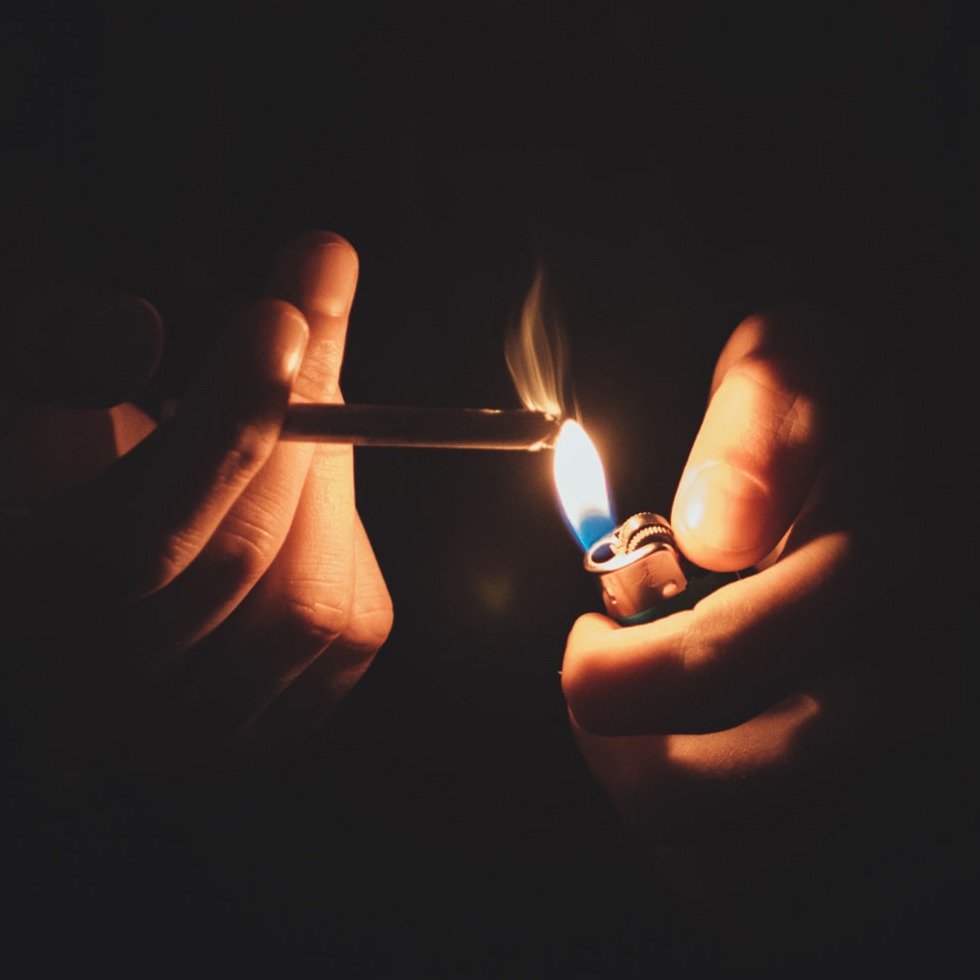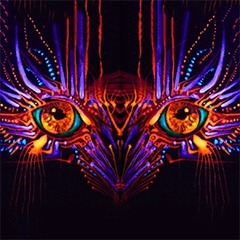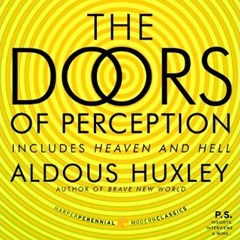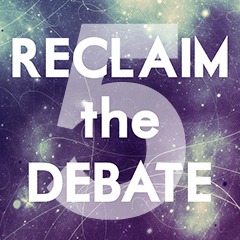Want your own copy? The paperback is available on Amazon.
Reflecting on my experience, I find myself agreeing with the eminent Cambridge philosopher, Dr. C. D. Broad, “that we should do well to consider much more seriously than we have hitherto been inclined to do the type of theory which Bergson put forward in connection with memory and sense perception. The suggestion is that the function of the brain and nervous system and sense organs is in the main eliminative and not productive. Each person is at each moment capable of remembering all that has ever happened to him and of perceiving everything that is happening everywhere in the universe. The function of the brain and nervous system is to protect us from being overwhelmed and confused by this mass of largely useless and irrelevant knowledge, by shutting out most of what we should otherwise perceive or remember at any moment, and leaving only that very small and special selection which is likely to be practically useful.” According to such a theory, each one of us is potentially Mind at Large. But in so far as we are animals, our business is at all costs to survive. To make biological survival possible, Mind at Large has to be funneled through the reducing valve of the brain and nervous system. What comes out at the other end is a measly trickle of the kind of consciousness which will help us to stay alive on the surface of this Particular planet. To formulate and express the contents of this reduced awareness, man has invented and endlessly elaborated those symbol-systems and implicit philosophies which we call languages. Every individual is at once the beneficiary and the victim of the linguistic tradition into which he has been born–the beneficiary inasmuch as language gives access to the accumulated records of other people’s experience, the victim in so far as it confirms him in the belief that reduced awareness is the only awareness and as it bedevils his sense of reality, so that he is all too apt to take his concepts for data, his words for actual things. That which, in the language of religion, is called “this world” is the universe of reduced awareness, expressed, and, as it were, petrified by language. The various “other worlds,” with which human beings erratically make contact are so many elements in the totality of the awareness belonging to Mind at Large. Most people, most of the time, know only what comes through the reducing valve and is consecrated as genuinely real by the local language. Certain persons, however, seem to be born with a kind of by-pass that circumvents the reducing valve. In others temporary by-passes may be acquired either spontaneously, or as the result of deliberate “spiritual exercises,” or through hypnosis, or by means of drugs. Through these permanent or temporary by-passes there flows, not indeed the perception “of everything that is happening everywhere in the universe” (for the by-pass does not abolish the reducing valve, which still excludes the total content of Mind at Large), but something more than, and above all something different from, the carefully selected utilitarian material which our narrowed, individual minds regard as a complete, or at least sufficient, picture of reality.
The brain is provided with a number of enzyme systems which serve to co-ordinate its workings. Some of these enzymes regulate the supply of glucose to the brain cells. Mescalin inhibits the production of these enzymes and thus lowers the amount of glucose available to an organ that is in constant need of sugar. When mescalin reduces the brain’s normal ration of sugar what happens? Too few cases have been observed, and therefore a comprehensive answer cannot yet be given. But what happens to the majority of the few who have taken mescalin under supervision can be summarized as follows.
- The ability to remember and to “think straight” is little if at all reduced. (Listening to the recordings of my conversation under the influence of the drug, I cannot discover that I was then any stupider than I am at ordinary times.)
- Visual impressions are greatly intensified and the eye recovers some of the perceptual innocence of childhood, when the sensum was not immediately and automatically subordinated to the concept. Interest in space is diminished and interest in time falls almost to zero.
- Though the intellect remains unimpaired and though perception is enormously improved, the will suffers a profound change for the worse. The mescalin taker sees no reason for doing anything in particular and finds most of the causes for which, at ordinary times, he was prepared to act and suffer, profoundly uninteresting. He can’t be bothered with them, for the good reason that he has better things to think about.
- These better things may be experienced (as I experienced them) “out there,” or “in here,” or in both worlds, the inner and the outer, simultaneously or successively. That they are better seems to be self-evident to all mescalin takers who come to the drug with a sound liver and an untroubled mind.
These effects of mescalin are the sort of effects you could expect to follow the administration of a drug having the power to impair the efficiency of the cerebral reducing valve. When the brain runs out of sugar, the undernourished ego grows weak, can’t be bothered to undertake the necessary chores, and loses all interest in those spatial and temporal relationships which mean so much to an organism bent on getting on in the world. As Mind at Large seeps past the no longer watertight valve, all kinds of biologically useless things start to happen. In some cases there may be extra-sensory perceptions. Other persons discover a world of visionary beauty. To others again is revealed the glory, the infinite value and meaningfulness of naked existence, of the given, unconceptualized event. In the final stage of egolessness there is an “obscure knowledge” that All is in all–that All is actually each. This is as near, I take it, as a finite mind can ever come to “perceiving everything that is happening everywhere in the universe.”
In this context, how significant is the enormous heightening, under mescalin, of the perception of color! For certain animals it is biologically very important to be able to distinguish certain hues. But beyond the limits of their utilitarian spectrum, most creatures are completely color blind. Bees, for example, spend most of their time “deflowering the fresh virgins of the spring”; but, as Von Frisch has shown, they can recognize only a very few colors. Man’s highly developed color sense is a biological luxury–inestimably precious to him as an intellectual and spiritual being, but unnecessary to his survival as an animal. To judge by the adjectives which Homer puts into their mouths, the heroes of the Trojan War hardly excelled the bees in their capacity to distinguish colors. In this respect, at least, mankind’s advance has been prodigious.
Mescalin raises all colors to a higher power and makes the percipient aware of innumerable fine shades of difference, to which, at ordinary times, he is completely blind. It would seem that, for Mind at Large, the socalled secondary characters of things are primary. Unlike Locke, it evidently feels that colors are more important, better worth attending to, than masses, positions and dimensions. Like mescalin takers, many mystics perceive supernaturally brilliant colors, not only with the inward eye, but even in the objective world around them. Similar reports are made by psychics and sensitives. There are certain mediums to whom the mescalin taker’s brief revelation is a matter, during long periods, of daily and hourly experience.
From this long but indispensable excursion into the realm of theory, we may now return to the miraculous facts–four bamboo chair legs in the middle of a room. Like Wordsworth’s daffodils, they brought all manner of wealth–the gift, beyond price, of a new direct insight into the very Nature of Things, together with a more modest treasure of understanding in the field, especially, of the arts.
A rose is a rose is a rose. But these chair legs were chair legs were St. Michael and all angels. Four or five hours after the event, when the effects of a cerebral sugar shortage were wearing off, I was taken for a little tour of the city, which included a visit, towards sundown, to what is modestly claimed to be the World’s Biggest Drug Store. At the back of the W.B.D.S., among the toys, the greeting cards and the comics, stood a row, surprisingly enough, of art books. I picked up the first volume that came to hand. It was on Van Gogh, and the picture at which the book opened was “The Chair”–that astounding portrait of a Ding an Sich, which the mad painter saw, with a kind of adoring terror, and tried to render on his canvas. But it was a task to which the power even of genius proved wholly inadequate. The chair Van Gogh had seen was obviously the same in essence as the chair I had seen. But, though incomparably more real than the chairs of ordinary perception, the chair in his picture remained no more than an unusually expressive symbol of the fact. The fact had been manifested Suchness; this was only an emblem. Such emblems are sources of true knowledge about the Nature of Things, and this true knowledge may serve to prepare the mind which accepts it for immediate insights on its own account. But that is all. However expressive, symbols can never be the things they stand for.
It would be interesting, in this context, to make a study of the works of art available to the great knowers of Suchness. What sort of pictures did Eckhart look at? What sculptures and paintings played a part in the religious experience of St. John of the Cross, of Hakuin, of Hui-neng, of William Law? The questions are beyond my power to answer; but I strongly suspect that most of the great knowers of Suchness paid very little attention to art–some refusing to have anything to do with it at all, others being content with what a critical eye would regard as second-rate, or even, tenth-rate, works. (To a person whose transfigured and transfiguring mind can see the All in every this, the first-rateness or tenth-rateness of even a religious painting will be a matter of the most sovereign indifference.) Art, I suppose, is only for beginners, or else for those resolute dead-enders, who have made up their minds to be content with the ersatz of Suchness, with symbols rather than with what they signify, with the elegantly composed recipe in lieu of actual dinner.
I returned the Van Gogh to its rack and picked up the volume standing next to it. It was a book on Botticelli. I turned the pages. “The Birth of Venus”-never one of my favorites. “Mars and Venus,” that loveliness so passionately denounced by poor Ruskin at the height of his long-drawn sexual tragedy. The marvelously rich and intricate “Calumny of Apelles.” And then a somewhat less familiar and not very good picture, “Judith.” My attention was arrested and I gazed in fascination, not at the pale neurotic heroine or her attendant, not at the victim’s hairy head or the vernal landscape in the background, but at the purplish silk of Judith’s pleated bodice and long wind-blown skirts.
This was something I had seen before-seen that very morning, between the flowers and the furniture, when I looked down by chance, and went on passionately staring by choice, at my own crossed legs. Those folds in the trousers–what a labyrinth of endlessly significant complexity! And the texture of the gray flannel–how rich, how deeply, mysteriously sumptuous! And here they were again, in Botticelli’s picture.
Civilized human beings wear clothes, therefore there can be no portraiture, no mythological or historical storytelling without representations of folded textiles. But though it may account for the origins, mere tailoring can never explain the luxuriant development of drapery as a major theme of all the plastic arts. Artists, it is obvious, have always loved drapery for its own sake—or, rather, for their own. When you paint or carve drapery, you are painting or carving forms which, for all practical purposes, are non-representational-the kind of unconditioned forms on which artists even in the most naturalistic tradition like to let themselves go. In the average Madonna or Apostle the strictly human, fully representational element accounts for about ten per cent of the whole. All the rest consists of many colored variations on the inexhaustible theme of crumpled wool or linen. And these non-representational nine-tenths of a Madonna or an Apostle may be just as important qualitatively as they are in quantity. Very often they set the tone of the whole work of art, they state the key in which the theme is being rendered, they express the mood, the temperament, the attitude to life of the artist. Stoical serenity reveals itself in the smooth surfaces, the broad untortured folds of Piero’s draperies. Torn between fact and wish, between cynicism and idealism, Bernini tempers the all but caricatural verisimilitude of his faces with enormous sartorial abstractions, which are the embodiment, in stone or bronze, of the everlasting commonplaces of rhetoric–the heroism, the holiness, the sublimity to which mankind perpetually aspires, for the most part in vain. And here are El Greco’s disquietingly visceral skirts and mantles; here are the sharp, twisting, flame-like folds in which Cosimo Tura clothes his figures: in the first, traditional spirituality breaks down into a nameless physiological yearning; in the second, there writhes an agonized sense of the world’s essential strangeness and hostility. Or consider Watteau; his men and women play lutes, get ready for balls and harlequinades, embark, on velvet lawns and under noble trees, for the Cythera of every lover’s dream; their enormous melancholy and the flayed, excruciating sensibility of their creator find expression, not in the actions recorded, not in the gestures and the faces portrayed, but in the relief and texture of their taffeta skirts, their satin capes and doublets. Not an inch of smooth surface here, not a moment of peace or confidence, only a silken wilderness of countless tiny pleats and wrinkles, with an incessant modulation–inner uncertainty rendered with the perfect assurance of a master hand—of tone into tone, of one indeterminate color into another. In life, man proposes, God disposes. In the plastic arts the proposing is done by the subject matter; that which disposes is ultimately the artist’s temperament, proximately (at least in portraiture, history and genre) the carved or painted drapery. Between them, these two may decree that a fete galante shall move to tears, that a crucifixion shall be serene to the point of cheerfulness, that a stigmatization shall be almost intolerably sexy, that the likeness of a prodigy of female brainlessness (I am thinking now of Ingres’ incomparable Mme. Moitessier) shall express the austerest, the most uncompromising intellectuality.
But this is not the whole story. Draperies, as I had now discovered, are much more than devices for the introduction of non-representational forms into naturalistic paintings and sculptures. What the rest of us see only under the influence of mescalin, the artist is congenitally equipped to see all the time. His perception is not limited to what is biologically or socially useful. A little of the knowledge belonging to Mind at Large oozes past the reducing valve of brain and ego, into his consciousness. It is a knowledge of the intrinsic significance of every existent. For the artist as for the mescalin taker draperies are living hieroglyphs that stand in some peculiarly expressive way for the unfathomable mystery of pure being. More even than the chair, though less perhaps than those wholly supernatural flowers, the folds of my gray flannel trousers were charged with “is-ness.” To what they owed this privileged status, I cannot say. Is it, perhaps, because the forms of folded drapery are so strange and dramatic that they catch the eye and in this way force the miraculous fact of sheer existence upon the attention? Who knows? What is important is less the reason for the experience than the experience itself. Poring over Judith’s skirts, there in the World’s Biggest Drug Store, I knew that Botticelli–and not Botticelli alone, but many others too-had looked at draperies with the same transfigured and transfiguring eyes as had been mine that morning. They had seen theIstigkeit, the Allness and Infinity of folded cloth and had done their best to render it in paint or stone. Necessarily, of course, without success. For the glory and the wonder of pure existence belong to another order, beyond the Power of even the highest art to express. But in Judith’s skirt I could clearly see what, if I had been a painter of genius, I might have made of my old gray flannels. Not much, heaven knows, in comparison with the reality, but enough to delight generation after generation of beholders, enough to make them understand at least a little of the true significance of what, in our pathetic imbecility, we call “mere things” and disregard in favor of television.
“This is how one ought to see,” I kept saying as I looked down at my trousers, or glanced at the jeweled books in the shelves, at the legs of my infinitely more than Van-Goghian chair. “This is how one ought to see, how things really are.” And yet there were reservations. For if one always saw like this, one would never want to do anything else. Just looking, just being the divine Not-self of flower, of book, of chair, of flannel. That would be enough. But in that case what about other people? What about human relations? In the recording of that morning’s conversations I find the question constantly repeated, “What about human relations?” How could one reconcile this timeless bliss of seeing as one ought to see with the temporal duties of doing what one ought to do and feeling as one ought to feel? “One ought to be able,” I said, “to see these trousers as infinitely important and human beings as still more infinitely important.” One ought-but in practice it seemed to be impossible. This participation in the manifest glory of things left no room, so to speak, for the ordinary, the necessary concerns of human existence, above all for concerns involving persons. For Persons are selves and, in one respect at least, I was now a Not-self, simultaneously perceiving and being the Not-self of the things around me. To this new-born Not-self, the behavior, the appearance, the very thought of the self it had momentarily ceased to be, and of other selves, its one-time fellows, seemed not indeed distasteful (for distastefulness was not one of the categories in terms of which I was thinking), but enormously irrelevant. Compelled by the investigator to analyze and report on what I was doing (and how I longed to be left alone with Eternity in a flower, Infinity in four chair legs and the Absolute in the folds of a pair of flannel trousers!), I realized that I was deliberately avoiding the eyes of those who were with me in the room, deliberately refraining from being too much aware of them. One was my wife, the other a man I respected and greatly liked; but both belonged to the world from which, for the moment, mescalin had delivered me “e world of selves, of time, of moral judgments and utilitarian considerations, the world (and it was this aspect of human life which I wished, above all else, to forget) of self-assertion, of cocksureness, of overvalued words and idolatrously worshiped notions.
At this stage of the proceedings I was handed a large colored reproduction of the well-known self-portrait by Cezanne–the head and shoulders of a man in a large straw hat, red-cheeked, red-lipped, with rich black whiskers and a dark unfriendly eye. It is a magnificent painting; but it was not as a painting that I now saw it. For the head promptly took on a third dimension and came to life as a small goblin-like man looking out through a window in the page before me. I started to laugh. And when they asked me why, “What pretensions!” I kept repeating. “Who on earth does he think he is?” The question was not addressed to Cezanne in particular, but to the human species at large. Who did they all think they were?
“It’s like Arnold Bennett in the Dolomites,” I said, suddenly remembering a scene, happily immortalized in a snapshot, of A.B., some four or five years before his death, toddling along a wintry road at Cortina d’Ampezzo. Around him lay the virgin snow; in the background was a more than gothic aspiration of red crags. And there was dear, kind, unhappy A.B., consciously overacting the role of his favorite character in fiction, himself, the Card in person. There he went, toddling slowly in the bright Alpine sunshine, his thumbs in the armholes of a yellow waistcoat which bulged, a little lower down, with the graceful curve of a Regency bow window at Brighten–his head thrown back as though to aim some stammered utterance, howitzer-like, at the blue dome of heaven. What he actually said, I have forgotten; but what his whole manner, air and posture fairly shouted was, “I’m as good as those damned mountains.” And in some ways, of course, he was infinitely better; but not, as he knew very well, in the way his favorite character in fiction liked to imagine.
Successfully (whatever that may mean) or unsuccessfully, we all overact the part of our favorite character in fiction. And the fact, the almost infinitely unlikely fact, of actually being Cezanne makes no difference. For the consummate painter, with his little pipeline to Mind at Large by-passing the brain valve and ego-filter, was also and just as genuinely this whiskered goblin with the unfriendly eye.
For relief I turned back to the folds in my trousers. “This is how one ought to see,” I repeated yet again. And I might have added,’ ‘These are the sort of things one ought to look at.” Things without pretensions, satisfied to be merely themselves, sufficient in their Suchness, not acting a part, not trying, insanely, to go it alone, in isolation from the Dharma-Body, in Luciferian defiance of the grace of god.
“The nearest approach to this,” I said, “would be a Vermeer.”
Yes, a Vermeer. For that mysterious artist was truly gifted-with the vision that perceives the Dharma-Body as the hedge at the bottom of the garden, with the talent to render as much of that vision as the limitations of human capacity permit, and with the prudence to confine himself in his paintings to the more manageable aspects of reality; for though Vermeer represented human beings, he was always a painter of still life. Cezanne, who told his female sitters to do their best to look like apples, tried to paint portraits in the same spirit. But his pippin-like women are more nearly related to Plato’s Ideas than to the Dharma-Body in the hedge. They are Eternity and Infinity seen, not in sand or flower, but in the abstractions of some very superior brand of geometry. Vermeer never asked his girls to look like apples. On the contrary, he insisted on their being girls to the very limit–but always with the proviso that they refrain from behaving girlishly. They might sit or quietly stand but never giggle, never display self-consciousness, never say their prayers or pine for absent sweethearts, never gossip, never gaze enviously at other women’s babies, never dirt, never love or hate or work. In the act of doing any of these things they would doubtless become more intensely themselves, but would cease, for that very reason, to manifest their divine essential Not-self. In Blake’s phrase, the doors of Vermeer’s perception were only partially cleansed. A single panel had become almost perfectly transparent; the rest of the door was still muddy. The essential Not-self could be perceived very clearly in things and in living creatures on the hither side of good and evil. In human beings it was visible only when they were in repose, their minds untroubled, their bodies motionless. In these circumstances Vermeer could see Suchness in all its heavenly beauty—could see and, in some small measure, render it-in a subtle and sumptuous still life. Vermeer is undoubtedly the greatest painter of human still lives. But there have been others, for example, Vermeer’s French contemporaries, the Le Nain brothers. They set out, I suppose, to be genre painters; but what they actually produced was a series of human still lives, in which their cleansed perception of the infinite significance of all things is rendered not, as with Vermeer, by subtle enrichment of color and texture, but by a heightened clarity, an obsessive distinctness of form, within an austere, almost monochromatic tonality. In our own day we have had Vuillard, the painter, at his best, of unforgettably splendid pictures of the Dharma-Body manifested in a bourgeois bedroom, of the Absolute blazing away in the midst of some stockbroker’s family in a suburban garden, taking tea.
Ce qui fait que I’ancien bandagiste renie
Le compioit dont le faste allechait les passants,
C’est son jardin d’Auteuil, ou, veufs de rout encens,
Les Zinnias ont I’air d’etre en tole vernie.
For Laurent Tailhade the spectacle was merely obscene. But if the retired rubber goods merchant had sat still enough, Vuillard would have seen in him only the Dharma-Body, would have painted, in the zinnias, the goldfish pool, the villa’s Moorish tower and Chinese lanterns, a corner of Eden before the Fall.









